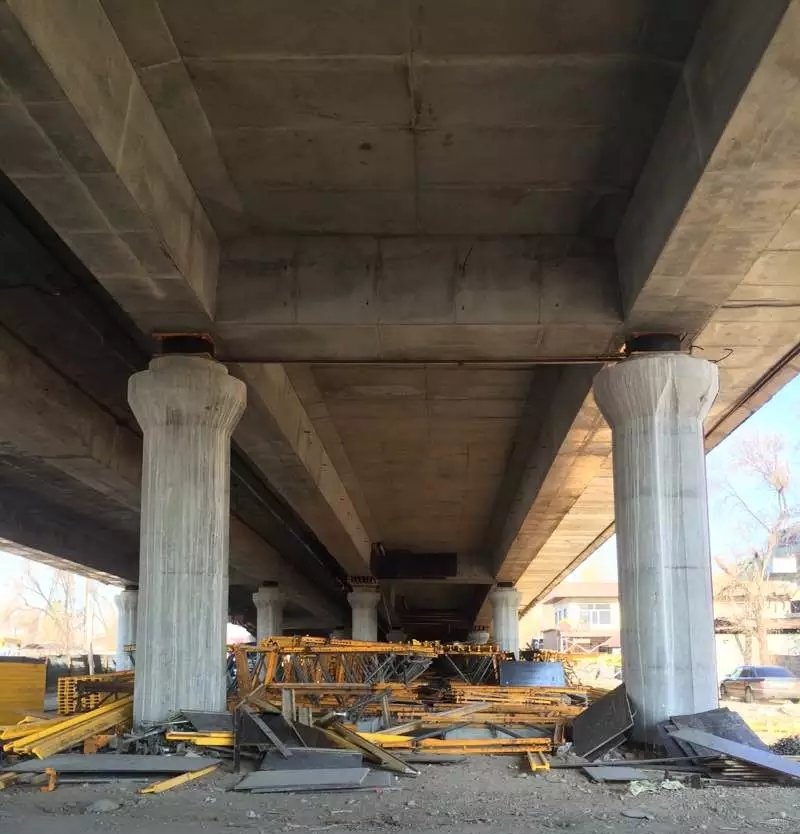Bridge seismic isolation bearings must meet the following core criteria: basic performance requirements, system reliability, and structural design specifications.

1.1 Basic Performance Requirements
As critical components of bridge structures, seismic and isolation bearings—along with their connections—must:Withstand seismic forces without local or global damage during earthquakes. Retain residual load-bearing capacity post-earthquake for continue functionality. Endure earthquakes exceeding design intensity without failure or operational restrictions. Minimize damage under design-level earthquakes, avoiding costly replacements.
1.2 Enhancing Structural System Reliability:
To bolster the reliability of seismic isolation bearings and their structural connections, engineers must integrate advanced safety factors into earthquake-resistant designs. Key strategies include:
Amplified Seismic Displacement Design
Apply a displacement amplification factor to calculated seismic displacements, ensuring bearings and connections account for potential ground motion uncertainties and nonlinear structural behavior.
Reliability Coefficients for Non-Isolation Systems
For components not part of isolation systems, multiply seismic loads by a reliability coefficient ≥1.0, based on their post-earthquake role in maintaining structural stability.Per en15129 Seismic Design Code, structural connections require a 1.5 reliability coefficient to meet stringent earthquake engineering standards.
Compliance with International Standards
Adhere to en15129 mandates for seismic safety margins, ensuring connections withstand extreme seismic scenarios while preserving post-earthquake functionality.
2. Functional Requirements for Seismic and Isolation Bearings:
Seismic and isolation bearings, along with their structural connections, must adhere to strict functional criteria throughout their life cycle to ensure optimal performance and safety. Key requirements include:
① Design and Manufacturing Compliance
Develop bearings and connections based on lifespan-specific design parameters, including allowable tolerances, to meet mechanical, physical, chemical, biological, and environmental standards.
Ensure materials and construction methods align with multi-condition resilience, addressing factors like corrosion resistance, thermal stability, and dynamic load capacity.
②.Accessibility for Inspection and Replacement
Integrate user-centric design principles into structural layouts to facilitate routine inspections and efficient component replacements over the building’s lifespan.
Prioritize equipment and personnel accessibility during initial structural planning, ensuring maintenance workflows comply with safety and operational efficiency guidelines.
Structural and Material Requirements for Seismic Isolation Bearings:
Seismic isolation bearings and their structural connections must align with performance-driven design principles:
Ensure bearings and connections exhibit robust stability, adequate strength, and ductility to withstand design-level seismic forces.
Under ULS conditions:Components (excluding fuse mechanisms) must resist catastrophic failure even with localized damage.
Damaged parts must be easily replaceable, with undamaged sections retaining residual load-bearing capacity equal to post-earthquake permanent loads or combined design scenarios.
Maintain full operational integrity under normal conditions and minor seismic events.Post-earthquake, bearings should sustain minimal damage without functional impairment or urgent repairs.
Seismic isolation bearings and their structural connections must meet strict industry-specific standards (e.g., ISO, ASTM, EN) tailored to their type and application. Key criteria include:
Aligning performance metrics with global regulatory benchmarks for strength, durability, and seismic resilience.
Conducting rigorous prototype testing and finite element analysis (FEA) to validate compliance with standard specifications.
Evaluate bearings under multi-directional seismic forces (vertical, horizontal, torsional) and complex load combinations to simulate real-world earthquake scenarios.
Apply a 1.1x strength safety factor to seismic forces transmitted to connections, ensuring overload protection and structural integrity.
Address seismic uncertainty by selecting materials and manufacturing processes that align with design specifications and long-term performance goals.Ensure mechanical repeatability and consistent physical properties through advanced model testing and real-world validation.
Eliminate catastrophic failure risks by incorporating redundancy and high reliability coefficients
Use materials certified under international standards (e.g., ASTM A572, EN 10025) and rigorously test their performance under high-strain seismic conditions (e.g., strain rates ≥5%/sec).
Temperature fluctuations (-30°C to +60°C).Chemical corrosion (e.g., de-icing salts, industrial pollutants).
Biological degradation (e.g., mold, microbial growth).
Nuclear radiation (for specialized infrastructure).
8.3 Aging and Degradation Resistance
Design for long-term reliability by accounting for material aging mechanisms such as:
Fatigue cracking from cyclic loading.Creep deformation under sustained stress.UV degradation and oxidation.